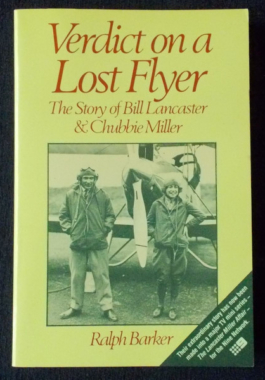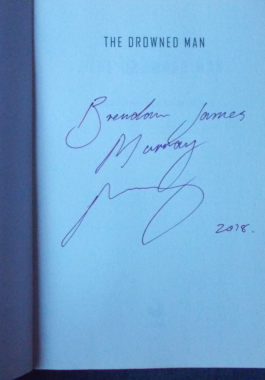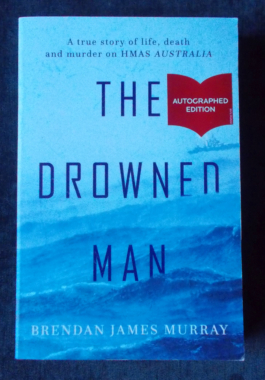-

White Mischief: James Fox
$12.00On January 24, 1941, the body of Josslyn Hay, Earl of Erroll was found lying on the floor of his Buick outside Nairobi - with a bullet in his head. Erroll, at 39, was influential in the Kenyan Happy Valley community, charming, good at bridge and polo and devoted to the seduction of other men's wives - preferably rich ones. Incredibly ruthless in his hedonistic pursuit of pleasure, he had wrecked many marriages. Sir Henry 'Jock' Delves Broughton, whose wife Diana was Erroll's current conquest, had the most obvious motive. He stood trial with implacable calm, was acquitted and emerged unscathed. No-one has ever been convicted for the murder and the case has become a classic mystery together with the scandalous exposé of the extravagant, sybaritic way of life of the enchanted feudal paradise known since the 1920s as Happy Valley, the community of English aristocrats who subscribed to the three As: altitude, alcohol and adultery. -
 The Mafia murders that stunned Italy and how the killers were brought to justice...On 23 May 1992, the Mafia murdered its 'Number One Enemy', prosecutor Judge Falcone, with a motorway bomb that also killed his wife and three bodyguards. Fifty-seven days later, the Mafia also murdered Falcone's friend and colleague, Judge Borsellino, with a car bomb outside his mother's home that also killed five bodyguards. These murders changed forever the way that Italy views the Mafia. Based on interviews and the testimony of investigators, Mafia super grasses, survivors, relatives and friends, Vendetta recounts how the Mafiosi planned and carried out the murders and how the police hunted them down. Illustrated with black and white photographs.
The Mafia murders that stunned Italy and how the killers were brought to justice...On 23 May 1992, the Mafia murdered its 'Number One Enemy', prosecutor Judge Falcone, with a motorway bomb that also killed his wife and three bodyguards. Fifty-seven days later, the Mafia also murdered Falcone's friend and colleague, Judge Borsellino, with a car bomb outside his mother's home that also killed five bodyguards. These murders changed forever the way that Italy views the Mafia. Based on interviews and the testimony of investigators, Mafia super grasses, survivors, relatives and friends, Vendetta recounts how the Mafiosi planned and carried out the murders and how the police hunted them down. Illustrated with black and white photographs. -

Twisted: John Glatt
$85.00When high school sweethearts Karen and Richard Sharpe married, they shared an interest in medicine, a desire for a family and dreams for the future. For Karen, the dream turned into a nightmare. After years of abuse at the hands of her physician husband, she tried to end their 27-year marriage. Fearing a crushing divorce settlement, Richard ended the marriage first by unloading a .22 rifle into Karen's chest. The murder revealed more than Boston society was ready for: Richard Sharpe's compulsive cross-dressing, with a preference for his own daughter's underwear; his taking of hormones to grow breasts, even stealing his wife's birth control pills to help the process. But there was more - much more...Illustrated with black and white photographs.
-
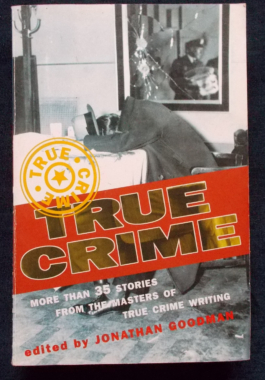 More than 35 accounts of notorious cases and lurid curiosities from the history of crime, described by criminology's most distinguished authors. In this volume: The murder of John Lennon; The rise and fall of Al Capone; The pathologist's account in the Nilsen case; Damon Runyan at a gangster's trial; Edgar Wallace at the scene of a crime; Abraham Lincoln's assassination; A hanging judge's diary; the death of Jesse James; The guillotining of Henri Landru; Jack the Ripper's real identity; W.M. Thackery: On Going To A Hanging; James Turber on a Broadway Gambler's demise; Edmund Pearson's Notes For Murderesses; the first electrocution at Sing Sing - and more.
More than 35 accounts of notorious cases and lurid curiosities from the history of crime, described by criminology's most distinguished authors. In this volume: The murder of John Lennon; The rise and fall of Al Capone; The pathologist's account in the Nilsen case; Damon Runyan at a gangster's trial; Edgar Wallace at the scene of a crime; Abraham Lincoln's assassination; A hanging judge's diary; the death of Jesse James; The guillotining of Henri Landru; Jack the Ripper's real identity; W.M. Thackery: On Going To A Hanging; James Turber on a Broadway Gambler's demise; Edmund Pearson's Notes For Murderesses; the first electrocution at Sing Sing - and more. -
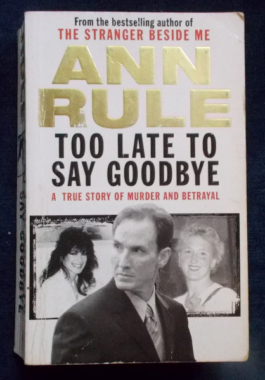 Beautiful Jenn Corbin appeared to have it all: two dear little boys, a posh home in one of the upscale suburbs of Atlanta, expensive cars, a plush houseboat and a husband - Dr. Bart Corbin, a successful dentist - who was tall, handsome, and brilliant. Then in December 2004, Jenn was found dead with a bullet in her head. Apparently a suicide. But Gwinnett County detective Marcus Head was not totally convinced, nor was Jenn's family, who could not believe she would take her own life. Only later would detectives learn that another beautiful woman in Dr. Corbin's past had been found dead in exactly the same way - and who had also been ruled a suicide...
Beautiful Jenn Corbin appeared to have it all: two dear little boys, a posh home in one of the upscale suburbs of Atlanta, expensive cars, a plush houseboat and a husband - Dr. Bart Corbin, a successful dentist - who was tall, handsome, and brilliant. Then in December 2004, Jenn was found dead with a bullet in her head. Apparently a suicide. But Gwinnett County detective Marcus Head was not totally convinced, nor was Jenn's family, who could not believe she would take her own life. Only later would detectives learn that another beautiful woman in Dr. Corbin's past had been found dead in exactly the same way - and who had also been ruled a suicide... -
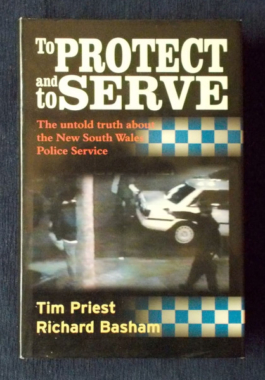 Almost every month in New South Wales, there are reports of police corruption and a police service under attack, from the criminals it tries to put away and the people it tries to protect and serve. Are the reports mere media sensationalism, or is the New South Wales Police in serious trouble? And if so, where did it go wrong? Priest was a cop who loved his job and gave everything he had to fight crime on the drug-ridden streets of Cabramatta. Yet he found his biggest battle was not with the drug gangs but with the very service he worked for. Eventually he could stand it no longer and spoke out about the bizarre policy decisions, politics, bureaucratic bungling and chronic lack of resources. For this he was labelled a whistle-blower and ultimately railroaded out of the police force. Yet a parlimentary enquiry and the testimony of other officers proved that Tim was not only telling the truth, but this was only the tip of the iceberg of what is really wrong with the New South Wales Police Force. While crime continues to spiral out of control, morale plummets among the rank and file police and experienced cops find they are at the mercy of a promotion system that leaves them nowhere to go but out. Tim teams up with Richard Basham, a man of vast experience through his involvement in a number of advisory boards, criminal investigations and personal friendships with ordinary cops, to reveal the untold story of the police service.
Almost every month in New South Wales, there are reports of police corruption and a police service under attack, from the criminals it tries to put away and the people it tries to protect and serve. Are the reports mere media sensationalism, or is the New South Wales Police in serious trouble? And if so, where did it go wrong? Priest was a cop who loved his job and gave everything he had to fight crime on the drug-ridden streets of Cabramatta. Yet he found his biggest battle was not with the drug gangs but with the very service he worked for. Eventually he could stand it no longer and spoke out about the bizarre policy decisions, politics, bureaucratic bungling and chronic lack of resources. For this he was labelled a whistle-blower and ultimately railroaded out of the police force. Yet a parlimentary enquiry and the testimony of other officers proved that Tim was not only telling the truth, but this was only the tip of the iceberg of what is really wrong with the New South Wales Police Force. While crime continues to spiral out of control, morale plummets among the rank and file police and experienced cops find they are at the mercy of a promotion system that leaves them nowhere to go but out. Tim teams up with Richard Basham, a man of vast experience through his involvement in a number of advisory boards, criminal investigations and personal friendships with ordinary cops, to reveal the untold story of the police service. -
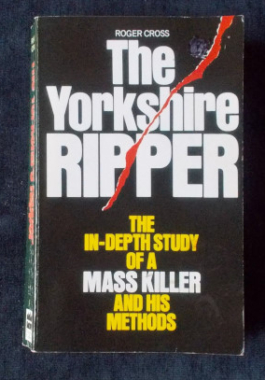 The author, the chief crime reporter for the Yorkshire Post worked on the sensational 'Yorkshire Ripper' case from the very beginning and was afforded the full co-operation and confidence of the Yorkshire Police. He delved deeply into every aspect of the case, interviewing, questioning and researching both Peter Sutcliffe's background, the strategies used and the problems encountered by the the police force assigned to catch him. Illustrated with black and white photographs.
The author, the chief crime reporter for the Yorkshire Post worked on the sensational 'Yorkshire Ripper' case from the very beginning and was afforded the full co-operation and confidence of the Yorkshire Police. He delved deeply into every aspect of the case, interviewing, questioning and researching both Peter Sutcliffe's background, the strategies used and the problems encountered by the the police force assigned to catch him. Illustrated with black and white photographs. -
 The courtrooms of the world have provided a stage for some of the most riveting human dramas ever told. Tension and conflict are the essence of a trial - sometimes with the threat of execution waiting at the end. Some of thee trials in this volume have changed the course of history, created new laws and have even introduced new words into the English Language: The Yorkshire Ripper; Charles I; Guy Fawkes; the Nuremberg trials and many more are featured, including the ever-popular and scandalous Profumo Affair. With black and white photographs.
The courtrooms of the world have provided a stage for some of the most riveting human dramas ever told. Tension and conflict are the essence of a trial - sometimes with the threat of execution waiting at the end. Some of thee trials in this volume have changed the course of history, created new laws and have even introduced new words into the English Language: The Yorkshire Ripper; Charles I; Guy Fawkes; the Nuremberg trials and many more are featured, including the ever-popular and scandalous Profumo Affair. With black and white photographs. -
 Jeffrey Dahmer, Ted Bundy, John Wayne Gacy, The Hillside Strangler . . . serial murderers are the most horrific of all criminals. Kate Kray, whose marriage to gangster Ronnie Kray offered her access to a gruesome underworld few would dare to enter, peers into the minds of the worst killers to reveal the awful truth of their abominable acts. The extreme nature of their violence and their shocking lack of remorse makes for uncomfortable yet fascinating reading. From obsessive sexual predators and extreme sadists to cannibals and head hunters, each type of psychopath is examined, their crimes told with grim frankness. Kate's connections allow her to ask uncomfortable questions few would dare to ask such men. Offering extraordinary insight into the motivations of violent perpetrators often portrayed as monsters, this book begs the question of whether such individuals can themselves be viewed as victims of a troubled past, or merely as exponents of pure evil.
Jeffrey Dahmer, Ted Bundy, John Wayne Gacy, The Hillside Strangler . . . serial murderers are the most horrific of all criminals. Kate Kray, whose marriage to gangster Ronnie Kray offered her access to a gruesome underworld few would dare to enter, peers into the minds of the worst killers to reveal the awful truth of their abominable acts. The extreme nature of their violence and their shocking lack of remorse makes for uncomfortable yet fascinating reading. From obsessive sexual predators and extreme sadists to cannibals and head hunters, each type of psychopath is examined, their crimes told with grim frankness. Kate's connections allow her to ask uncomfortable questions few would dare to ask such men. Offering extraordinary insight into the motivations of violent perpetrators often portrayed as monsters, this book begs the question of whether such individuals can themselves be viewed as victims of a troubled past, or merely as exponents of pure evil. -
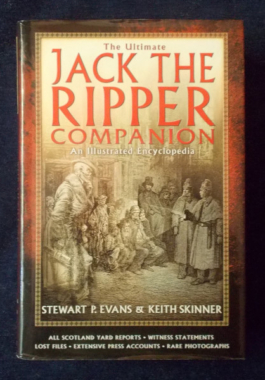 This really is the ultimate for Ripperologists - an encyclopedic work, solidly researched and profusely illustrated, collated from all the known and still-existing official records and supplemented by contemporary press reports. It presents. for the first time in one volume, a prime-source reference book on the eleven shocking prostitute murders that took place in the East End of London between 1888 and 1891. While there is no doubt that the Whitechapel Murders, as they were classified by Scotland Yard, were committed by more than one person, no one knows how many of the killings can be attributed to a single culprit. More than one murderer wore the guise of Jack the Ripper, and the identities of all suspects to this day remain unknown. Divorcing the facts of the Ripper case from the myths that have proliferated in fiction and film, this is a factual, documented narrative of the entire series of crimes, their forensic evidence, the official suspects and possible accomplices, police reports, inquests, newspaper articles of the day and rare photographs.
This really is the ultimate for Ripperologists - an encyclopedic work, solidly researched and profusely illustrated, collated from all the known and still-existing official records and supplemented by contemporary press reports. It presents. for the first time in one volume, a prime-source reference book on the eleven shocking prostitute murders that took place in the East End of London between 1888 and 1891. While there is no doubt that the Whitechapel Murders, as they were classified by Scotland Yard, were committed by more than one person, no one knows how many of the killings can be attributed to a single culprit. More than one murderer wore the guise of Jack the Ripper, and the identities of all suspects to this day remain unknown. Divorcing the facts of the Ripper case from the myths that have proliferated in fiction and film, this is a factual, documented narrative of the entire series of crimes, their forensic evidence, the official suspects and possible accomplices, police reports, inquests, newspaper articles of the day and rare photographs. -
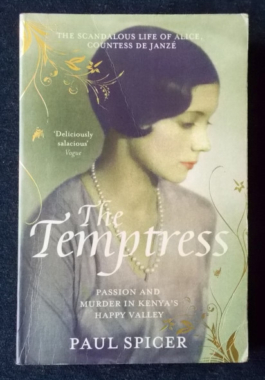 Alice de Janzé, glamorous American heiress, scandalised 1920's Paris when she left her aristocratic French husband for an English lover - whom she later tried to kill in a failed murder-suicide in the Gare du Nord. Abandoning Paris for the moneyed British colonial society known as Kenya's Happy Valley, she became the lover of the handsome womaniser, Joss Hay, Lord Erroll. In 1941, Erroll was found shot in his car on an isolated road. A cuckolded husband was brought to trial and acquitted... and the crime remained tantalizingly unsolved. The author's mother was one of Alice's confidantes, and after his mother's death found a wealth of Alice's personal letters, photographs and sketches. He began researching extensively to piece together what really happened that fateful evening and moreover, brings to life an era of unimaginable wealth and indulgence, where people changed bed partners as easily as they would order a cocktail and where jealousy and hidden passions brewed.This may be the solution of the murder of Lord Erroll.
Alice de Janzé, glamorous American heiress, scandalised 1920's Paris when she left her aristocratic French husband for an English lover - whom she later tried to kill in a failed murder-suicide in the Gare du Nord. Abandoning Paris for the moneyed British colonial society known as Kenya's Happy Valley, she became the lover of the handsome womaniser, Joss Hay, Lord Erroll. In 1941, Erroll was found shot in his car on an isolated road. A cuckolded husband was brought to trial and acquitted... and the crime remained tantalizingly unsolved. The author's mother was one of Alice's confidantes, and after his mother's death found a wealth of Alice's personal letters, photographs and sketches. He began researching extensively to piece together what really happened that fateful evening and moreover, brings to life an era of unimaginable wealth and indulgence, where people changed bed partners as easily as they would order a cocktail and where jealousy and hidden passions brewed.This may be the solution of the murder of Lord Erroll. -
 Like the Beaumont children and the Azaria Chamberlain cases before it, the backpacker murder case in Belanglo State Forest has entered Australian criminal folklore. Seven young people, most of them foreigners backpacking around Australia, brutally murdered, their remains uncovered in 1992 and 1993. It would take scores of police over three years, countless hours of forensic investigation, thousands of false leads and a few precious clues to charge and convict Ivan Milat for their horrific deaths. This is the definitive work on Ivan Milat, his family and the murders. Almost four years in the making, informed by exclusive interviews with members of the Milat family, key police investigators and Crown lawyers, this book reveals a family culture so bizarre it would lead inexorably to murder. It also scrutinises the police investigation – its remarkable success and failures, the dramatic turning point and the backbiting and bitterness that followed Milat's arrest. Thought-provoking, totally unsalacious and an exploration of the darker side of Australian life as a whole. Photographic illustrations.
Like the Beaumont children and the Azaria Chamberlain cases before it, the backpacker murder case in Belanglo State Forest has entered Australian criminal folklore. Seven young people, most of them foreigners backpacking around Australia, brutally murdered, their remains uncovered in 1992 and 1993. It would take scores of police over three years, countless hours of forensic investigation, thousands of false leads and a few precious clues to charge and convict Ivan Milat for their horrific deaths. This is the definitive work on Ivan Milat, his family and the murders. Almost four years in the making, informed by exclusive interviews with members of the Milat family, key police investigators and Crown lawyers, this book reveals a family culture so bizarre it would lead inexorably to murder. It also scrutinises the police investigation – its remarkable success and failures, the dramatic turning point and the backbiting and bitterness that followed Milat's arrest. Thought-provoking, totally unsalacious and an exploration of the darker side of Australian life as a whole. Photographic illustrations. -
 Book XII of Brother Cadfael. Christmas, A.D. 1141: Abbot Radulfus returns from London, bringing with him a priest for the vacant living of Holy Cross, also known as the Foregate. The new priest is a man of presence, learning and discipline, but he lacks humility and the common touch. When he is found drowned in the millpond, suspicion is cast upon a young man who arrived with the priest's train and was sent to work in Brother Cadfael's garden. Indeed, he is soon discovered to be an impostor. To Brother Cadfael now falls the familiar task of sorting out the complicated strands of innocence and guilt.
Book XII of Brother Cadfael. Christmas, A.D. 1141: Abbot Radulfus returns from London, bringing with him a priest for the vacant living of Holy Cross, also known as the Foregate. The new priest is a man of presence, learning and discipline, but he lacks humility and the common touch. When he is found drowned in the millpond, suspicion is cast upon a young man who arrived with the priest's train and was sent to work in Brother Cadfael's garden. Indeed, he is soon discovered to be an impostor. To Brother Cadfael now falls the familiar task of sorting out the complicated strands of innocence and guilt. -
 Joseph Mengele, the camp doctor at Auschwitz, was personally responsible for the murder of nearly 400,000 people and for the torture of thousands more as part of his 'scientific' experiments. Yet he evaded capture for 40 years and it is only after the discovery of his body in a Brazilian cemetery, that his full story could be told. This investigative biography traces Mengele's roots and examines the forces that made him into a mass murderer and torturer; follows Mengele the fugitive after his flight from Auschwitz and looks at the conspiracy in Germany and Latin America that saved Mengele from justice. This is not only an exposé of Mengele as the very embodiment of evil and the system that spawned him; it is also an explanation of the many 'ordinary' people who shielded and sustained the monster to the grave and beyond. Illustrated with black and white photos.
Joseph Mengele, the camp doctor at Auschwitz, was personally responsible for the murder of nearly 400,000 people and for the torture of thousands more as part of his 'scientific' experiments. Yet he evaded capture for 40 years and it is only after the discovery of his body in a Brazilian cemetery, that his full story could be told. This investigative biography traces Mengele's roots and examines the forces that made him into a mass murderer and torturer; follows Mengele the fugitive after his flight from Auschwitz and looks at the conspiracy in Germany and Latin America that saved Mengele from justice. This is not only an exposé of Mengele as the very embodiment of evil and the system that spawned him; it is also an explanation of the many 'ordinary' people who shielded and sustained the monster to the grave and beyond. Illustrated with black and white photos. -
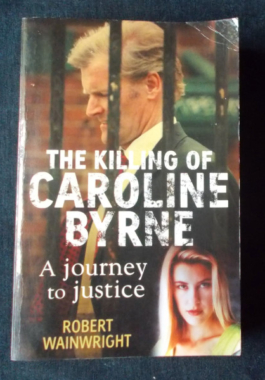 On a bleak, moonless winter night in 1995 beautiful Sydney model Caroline Byrne died, her body embedded head-first into a crevice at the bottom of The Gap at the entrance to Sydney Harbor. How did she get out so far, almost 12 meters from the base of the sheer sandstone precipice? Did she jump, as so many had done before at the notorious suicide spot, or had she been thrown in a fit of rage? What began as a sad ritual of retrieving the shattered bodies of shattered lives turned into one of the nation's most extraordinary murder investigations, leading to the dark heart of a city gripped by greed, pandering to its powerful and exposing a police force whose lack of imagination and resources was surpassed only by the doggedness of its finest officers to right an unforgivable wrong. this is a journey to justice: the astonishing inside story of Caroline's father Tony Byrne's determination to find the truth of his daughter's death and in doing so, test the justice system to its limits.
On a bleak, moonless winter night in 1995 beautiful Sydney model Caroline Byrne died, her body embedded head-first into a crevice at the bottom of The Gap at the entrance to Sydney Harbor. How did she get out so far, almost 12 meters from the base of the sheer sandstone precipice? Did she jump, as so many had done before at the notorious suicide spot, or had she been thrown in a fit of rage? What began as a sad ritual of retrieving the shattered bodies of shattered lives turned into one of the nation's most extraordinary murder investigations, leading to the dark heart of a city gripped by greed, pandering to its powerful and exposing a police force whose lack of imagination and resources was surpassed only by the doggedness of its finest officers to right an unforgivable wrong. this is a journey to justice: the astonishing inside story of Caroline's father Tony Byrne's determination to find the truth of his daughter's death and in doing so, test the justice system to its limits. -
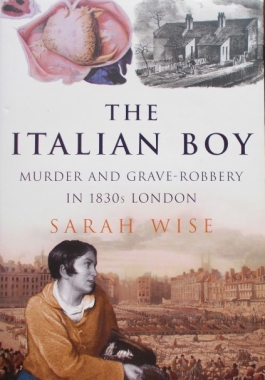
The Italian Boy: Sarah Wise
$30.00At the end of 1831, authorities unearthed a series of crimes at 3 Novia Scotia Gardens that appeared to be a copycat of the infamous Burke and Hare killings in Edinburgh only three years earlier. Soon three body-snatchers were on trial for providing the anatomy schools of London with suspiciously fresh bodies for dissection. They became famous as the London Burkers and their story was dubbed "The Italian Boy" case. The ensuing uproar forced legislation to end body-snatching in Britain. As well as covering the actual case, this book is a fascinating window on the lives of the poor of 1830s London. -
 The author took the unusual step of writing this book of case histories with the comments of children and young people who came before him in his capacity as a Childrens' Court magistrate. Some of the stories are horrifying and given without any 'glossing over' of the horror; some of the offences were committed by children, many against children but it is clear that everything possible was done to help the child become a member of the community again. These are stories of rape, drug addiction, perversion. incest, corruption, prostitution - and of children who deliberately committed offences to get to Court to settle their own problems. These children will haunt the reader - all innocent victims of parents, their environment, ignorance or predatory monsters. The title page contains a warning to parents...
The author took the unusual step of writing this book of case histories with the comments of children and young people who came before him in his capacity as a Childrens' Court magistrate. Some of the stories are horrifying and given without any 'glossing over' of the horror; some of the offences were committed by children, many against children but it is clear that everything possible was done to help the child become a member of the community again. These are stories of rape, drug addiction, perversion. incest, corruption, prostitution - and of children who deliberately committed offences to get to Court to settle their own problems. These children will haunt the reader - all innocent victims of parents, their environment, ignorance or predatory monsters. The title page contains a warning to parents... -
 Ron Williamson was a star college sportsman in the small town of Ada, Oklahoma. When he left to pursue his dreams he seemed destined for glory. But years of injury, drinking, drugs and women took their toll, and he returned to Ada a lonely drifter. Soon after his homecoming, a local cocktail waitress was raped and murdered. With no immediate leads, the police worked the case for five years before arresting Williamson and charging him with her murder. Despite no physical evidence, and based largely on the testimony of jailhouse snitches, he was found guilty at trial and sent to death row. Left to await his fate, Williamson was the only person to know the terrible truth: that an innocent man had been sent on a journey to hell. A journey from which he might never return...Illustrated with black and white photographs.
Ron Williamson was a star college sportsman in the small town of Ada, Oklahoma. When he left to pursue his dreams he seemed destined for glory. But years of injury, drinking, drugs and women took their toll, and he returned to Ada a lonely drifter. Soon after his homecoming, a local cocktail waitress was raped and murdered. With no immediate leads, the police worked the case for five years before arresting Williamson and charging him with her murder. Despite no physical evidence, and based largely on the testimony of jailhouse snitches, he was found guilty at trial and sent to death row. Left to await his fate, Williamson was the only person to know the terrible truth: that an innocent man had been sent on a journey to hell. A journey from which he might never return...Illustrated with black and white photographs. -
 Chapters include: Gangs And Gangsters: Al Capone, Frank Costello, Jo Adonis, the Messinas, the Krays and the Mafia; City Cases: Whitaker Wright, Lord Kylsant, Clarence Hatry, Horatio Bottomley, The Lynskey Tribunal, Ferdinand Lesseps, the Teapot Dome; Political Murders: Spencer Percival, the attempt on Lloyd George, John F. Kennedy, William McKinley, James A. Garfield, Abraham Lincoln, Rasputin, Mussoline and Mateotti; Kidnapping: Elizabeth Canning, the Lindbergh baby, James Cross, Pierre Laporte, Samuel Bronfman, Muriel McKay; Pleas Of Insanity: Lieutenant Holt, Colonel Rutherford, Ronald True, Dale Nelson, Leopold and Loeb, Harry Thaw; Sex Crimes: Alfred Whiteway, Edward Paisnel, Peter Griffiths, Patrick Byrne, Albert DeSalvo, Fritz Haarmann, Gaston Domincini; Cases Unsolved: Jack the Ripper, Mrs Caroline Luard.
Chapters include: Gangs And Gangsters: Al Capone, Frank Costello, Jo Adonis, the Messinas, the Krays and the Mafia; City Cases: Whitaker Wright, Lord Kylsant, Clarence Hatry, Horatio Bottomley, The Lynskey Tribunal, Ferdinand Lesseps, the Teapot Dome; Political Murders: Spencer Percival, the attempt on Lloyd George, John F. Kennedy, William McKinley, James A. Garfield, Abraham Lincoln, Rasputin, Mussoline and Mateotti; Kidnapping: Elizabeth Canning, the Lindbergh baby, James Cross, Pierre Laporte, Samuel Bronfman, Muriel McKay; Pleas Of Insanity: Lieutenant Holt, Colonel Rutherford, Ronald True, Dale Nelson, Leopold and Loeb, Harry Thaw; Sex Crimes: Alfred Whiteway, Edward Paisnel, Peter Griffiths, Patrick Byrne, Albert DeSalvo, Fritz Haarmann, Gaston Domincini; Cases Unsolved: Jack the Ripper, Mrs Caroline Luard. -
 Ronald Joseph Ryan was hanged in Melbourne on February 3, 1967, following his conviction for the shooting murder of a prison warder during a daring escape from the maximum-security Pentridge prison thirteen months before. The decision of the Victorian government in December 1966 to proceed with Ryan’s death sentence sparked immediate media condemnation and angry political protests, and put the Liberal premier, Sir Henry Bolte, under siege for the duration of the case. State governments around the country moved to abolish the death penalty in the 1970s and 1980s, and Ronald Ryan became the last man to be hanged in Australia. But who was Ronald Ryan, and how did he come to be the focus of such dramatic political events? Drawing on previously unpublished documents and personal accounts — including details of Ryan’s childhood and his early turn to crime — this book reveals the truth about Ryan’s guilt. It also goes behind the scenes to tell for the first time of the life-long anguish of the judge who pronounced the death sentence, the inner workings of the secret cabinet meeting that decided Ryan’s fate, and the dramatic political process that resulted in the rejection of eleventh-hour appeals to save Ryan. Illustrated with black and white photographs.
Ronald Joseph Ryan was hanged in Melbourne on February 3, 1967, following his conviction for the shooting murder of a prison warder during a daring escape from the maximum-security Pentridge prison thirteen months before. The decision of the Victorian government in December 1966 to proceed with Ryan’s death sentence sparked immediate media condemnation and angry political protests, and put the Liberal premier, Sir Henry Bolte, under siege for the duration of the case. State governments around the country moved to abolish the death penalty in the 1970s and 1980s, and Ronald Ryan became the last man to be hanged in Australia. But who was Ronald Ryan, and how did he come to be the focus of such dramatic political events? Drawing on previously unpublished documents and personal accounts — including details of Ryan’s childhood and his early turn to crime — this book reveals the truth about Ryan’s guilt. It also goes behind the scenes to tell for the first time of the life-long anguish of the judge who pronounced the death sentence, the inner workings of the secret cabinet meeting that decided Ryan’s fate, and the dramatic political process that resulted in the rejection of eleventh-hour appeals to save Ryan. Illustrated with black and white photographs. -
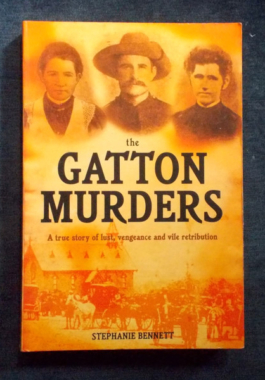 Boxing Day, 1898. Three members of the Murphy family - Michael, Ellen and Norah — are returning to the family farm after a trip in to Gatton, a small town west of Brisbane. On a deserted, moonlit road a few miles out of town they are ambushed. Their horse is killed and the three young people are taken to a remote paddock where the women are brutally raped and bludgeoned to death - and Michael is shot. By the time the police arrived the following day, locals had swarmed all over the crime scene, obliterating the evidence. What followed was a hopelessly bungled investigation and the crime remained unsolved. Fear and mistrust rocked the farming community. Theories about the perpetrator abounded. Was this the work of a sex-crazed tramp? Could a member of the Murphy family have been involved - or was revenge the motive? Stephanie Bennett's detailed examination of this baffling crime after many years spent scouring the available archival material, interviewing relatives of suspects and victims and visiting far flung areas of Queensland brings a new and disturbing theory to the surface that is both chilling and challenging. Queensland's most infamous unsolved murder.
Boxing Day, 1898. Three members of the Murphy family - Michael, Ellen and Norah — are returning to the family farm after a trip in to Gatton, a small town west of Brisbane. On a deserted, moonlit road a few miles out of town they are ambushed. Their horse is killed and the three young people are taken to a remote paddock where the women are brutally raped and bludgeoned to death - and Michael is shot. By the time the police arrived the following day, locals had swarmed all over the crime scene, obliterating the evidence. What followed was a hopelessly bungled investigation and the crime remained unsolved. Fear and mistrust rocked the farming community. Theories about the perpetrator abounded. Was this the work of a sex-crazed tramp? Could a member of the Murphy family have been involved - or was revenge the motive? Stephanie Bennett's detailed examination of this baffling crime after many years spent scouring the available archival material, interviewing relatives of suspects and victims and visiting far flung areas of Queensland brings a new and disturbing theory to the surface that is both chilling and challenging. Queensland's most infamous unsolved murder. -
 London, 1910 - the city is rocked by its first encounter with foreign gangsters. In December, a group of Russian anarchists were surprised while burgling a jeweller's shop in Houndsditch. They shot and killed three policemen and wounded two others. Within two weeks, most of the gang had been captured. Then the police were informed that the last two members of the gang were hiding at 100 Sidney Street. The police called in the military, local residents were evacuated and the firefight raged for six hours, culminating in the burning of the house and the discovery of the two agitators' bodies in the ruins. On New Year's Day, Leon Beron, a middle-aged Russian Jew, was found battered to death on Clapham Common. Knife cuts on his cheeks, inflicted after death, formed the shape of a rough 'S' - rumour said it was the revenge murder of an informer, 'S' being the initial letter for 'spy' in both Russian and Polish. Steinie Morrison, who had been seen in his company the night before, was arrested and charged with Beron's murder, and sentenced to hang. This was later commuted to life in prison. Morrison protested the change of sentence and for the next ten years, demanded that the original sentence be carried out, proclaiming his innocence and staging hunger strikes. He never changed his story, not even by the smallest detail, and died ten years later in prison. Was an innocent man convicted? And did the murder of Beron have any connection to the Siege of Sidney Street? With black and white photographs.
London, 1910 - the city is rocked by its first encounter with foreign gangsters. In December, a group of Russian anarchists were surprised while burgling a jeweller's shop in Houndsditch. They shot and killed three policemen and wounded two others. Within two weeks, most of the gang had been captured. Then the police were informed that the last two members of the gang were hiding at 100 Sidney Street. The police called in the military, local residents were evacuated and the firefight raged for six hours, culminating in the burning of the house and the discovery of the two agitators' bodies in the ruins. On New Year's Day, Leon Beron, a middle-aged Russian Jew, was found battered to death on Clapham Common. Knife cuts on his cheeks, inflicted after death, formed the shape of a rough 'S' - rumour said it was the revenge murder of an informer, 'S' being the initial letter for 'spy' in both Russian and Polish. Steinie Morrison, who had been seen in his company the night before, was arrested and charged with Beron's murder, and sentenced to hang. This was later commuted to life in prison. Morrison protested the change of sentence and for the next ten years, demanded that the original sentence be carried out, proclaiming his innocence and staging hunger strikes. He never changed his story, not even by the smallest detail, and died ten years later in prison. Was an innocent man convicted? And did the murder of Beron have any connection to the Siege of Sidney Street? With black and white photographs. -
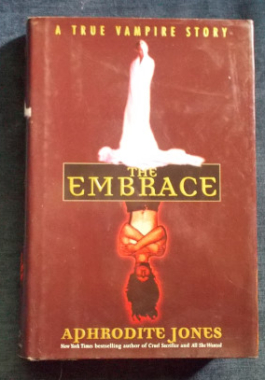
The Embrace: Aphrodite Jones
$20.00On November 25, 1996, in their home in the lakeside community of Eustis, Florida, Rick and Ruth Wendorf were savagely beaten to death with a tire iron. The Wendorfs' new Ford Explorer was stolen, but this was no routine robbery gone bad. This was a crime carried out by one Roderick Ferrell, a sixteen-year-old self-avowed Antichrist. His human sacrifice was a testament to the unique and sinister bond of four brainwashed teens. Heather Wendorf was a straight "A" student, a petite blonde with wide-set brown eyes. Yet she had been heard to wish her parents "off the face of the planet." Heather never dreamed that when she joined her friends for a joyride one fall evening, her wish had already come true. Including exclusive interviews with every living character involved in the case. -
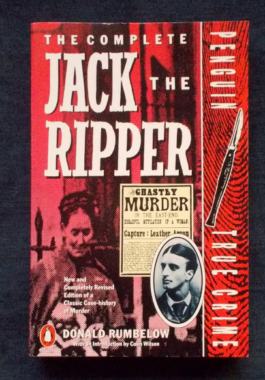 With the advantage of access to some of Scotland Yard's most confidential papers, Donald Rumbelow lays out all the evidence in the most comprehensive summary ever written about the Ripper. Rumbelow, a former London Metropolitan policeman, and an authority on crime, has subjected every theory – including those that have emerged in recent years – to the same deep scrutiny. He also examines the mythology surrounding the case and provides some fascinating insights into the portrayal of the Ripper on stage and screen and on the printed page. More seriously, he also examines the horrifying parallel crimes of the Düsseldorf Ripper and the Yorkshire Ripper in an attempt to throw further light on the atrocities of Victorian London.
With the advantage of access to some of Scotland Yard's most confidential papers, Donald Rumbelow lays out all the evidence in the most comprehensive summary ever written about the Ripper. Rumbelow, a former London Metropolitan policeman, and an authority on crime, has subjected every theory – including those that have emerged in recent years – to the same deep scrutiny. He also examines the mythology surrounding the case and provides some fascinating insights into the portrayal of the Ripper on stage and screen and on the printed page. More seriously, he also examines the horrifying parallel crimes of the Düsseldorf Ripper and the Yorkshire Ripper in an attempt to throw further light on the atrocities of Victorian London.


